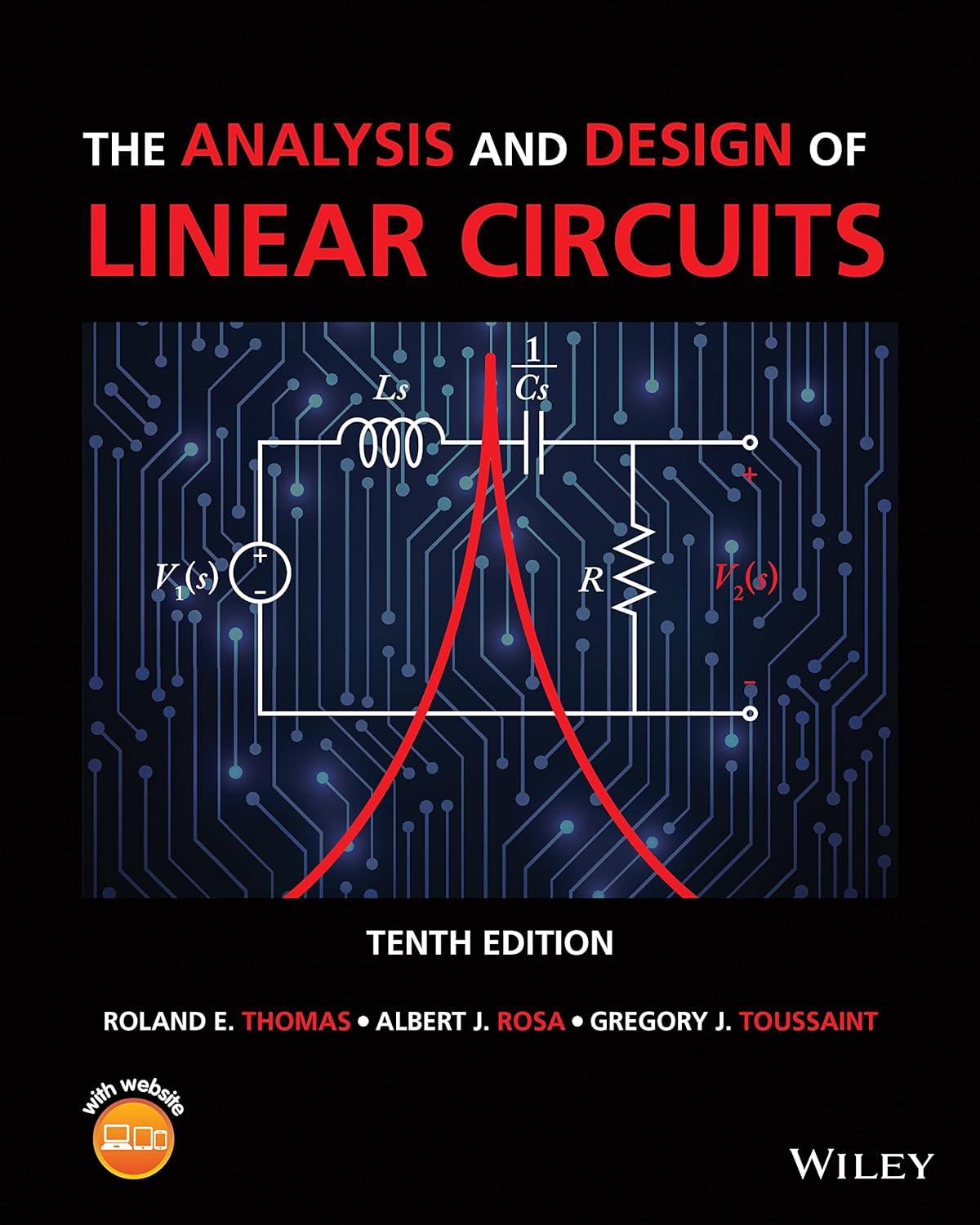A voltage (v_{mathrm{L}}(t)=5 cos (1000 n t) mathrm{V}) appears across a (50-mathrm{mH}) inductor, where (n) is a
Question:
A voltage \(v_{\mathrm{L}}(t)=5 \cos (1000 n t) \mathrm{V}\) appears across a \(50-\mathrm{mH}\) inductor, where \(n\) is a positive integer that controls the frequency of the input signal. The amplitude of the input signal is constant. Assume \(i_{\mathrm{L}}(\mathrm{O})=0 \mathrm{~A}\). Use MATLAB and symbolic variables to compute an expression for \(i_{\mathrm{L}}(t)\). On the same axes, plot \(i_{\mathrm{L}}(t)\) versus time for \(n=1,2,3,4\), and 5 , over an appropriate time scale. On another set of axes, plot the amplitude of \(i_{\mathrm{L}}(t)\) versus the coefficient \(n\).As \(n\) approaches infinity, what happens to the amplitude of the current? What type of circuit element does the inductor behave like as \(n\) approaches infinity?
Step by Step Answer:

The Analysis And Design Of Linear Circuits
ISBN: 9781119913023
10th Edition
Authors: Roland E. Thomas, Albert J. Rosa, Gregory J. Toussaint





